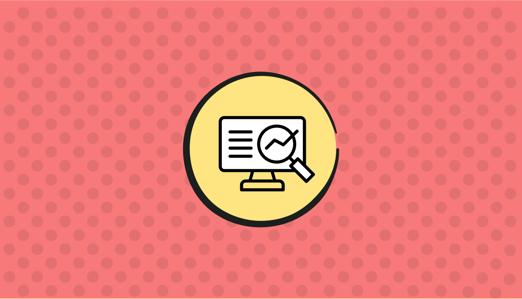
What Is AWS Cost Anomaly Detection?
AWS Cost Anomaly Detection is a service provided by Amazon Web Services to detect unusual spending patterns in real-time. By leveraging machine learning, it identifies deviations in spending and alerts users to potential cost overruns. This tool helps users manage costs and ensures that unexpected expenses do not derail budgets.
The service is useful for organizations that rely heavily on AWS services, as it provides proactive notification of cost anomalies. Users can define thresholds and rules to tailor the detection process according to their specific needs. This customization ensures that alerts are relevant and actionable, enhancing financial oversight within cloud environments.
This is part of a series of articles about AWS cost management.
How AWS Cost Anomaly Detection Works
AWS Cost Anomaly Detection uses the following process to monitor and manage cloud spending:
- Data collection: The service begins by gathering data related to your AWS usage. This includes metrics such as resource consumption, billing details, and historical cost data. It also collects information on specific resources like EC2 instances, S3 storage, and other AWS services, providing a dataset for analysis.
- Historical data analysis: After data collection, AWS Cost Anomaly Detection applies machine learning algorithms to analyze historical spending patterns. This analysis creates a baseline of typical costs over time, which serves as a reference point for identifying unusual spending behavior.
- Anomaly detection: With the baseline established, the system continuously monitors real-time spending, comparing it against the historical patterns. It looks for deviations that fall outside the expected range, flagging these as potential anomalies.
- Threshold calculation: The service dynamically calculates thresholds based on historical spending data to differentiate between normal fluctuations and anomalies. Users can set custom thresholds to further refine the detection process according to their specific needs.
- Anomaly identification: When spending exceeds these calculated thresholds, the system identifies these instances as anomalies. These anomalies are indicators of potential issues, such as unexpected cost spikes, that may need further investigation.
- Alert generation: Upon detecting an anomaly, the service automatically generates alerts to notify relevant stakeholders. These alerts can be configured to be sent via email, Amazon SNS, or integrated with AWS Cost Explorer’s anomaly detection feature.
- Root cause analysis: The service not only detects anomalies but also performs a root cause analysis. This analysis provides insights into the specific resources or services responsible for the anomaly.
- Actionable recommendations: Finally, AWS Cost Anomaly Detection offers recommendations to address the detected anomalies. These recommendations are based on AWS best practices and may include suggestions such as optimizing resource usage, adjusting configurations, or exploring alternative pricing models like Reserved Instances (RI) or Savings Plans (SP).
Related content: Read our guide to AWS cost analysis.
Cost Anomaly Detection vs. AWS Budgets
AWS Cost Anomaly Detection and AWS Budgets serve distinct yet complementary functions within cost management strategies:
- AWS Budgets helps users set and track spending limits across different accounts and resources; Cost Anomaly Detection focuses on identifying unforeseen deviations in expenditure.
- AWS Budgets is proactive, guiding users to stay within predefined spending limits by issuing alerts as costs approach budget caps; Cost Anomaly Detection is reactive, identifying and alerting about unexpected costs.
Pros and Cons of AWS Cost Anomaly Detection
AWS Cost Anomaly Detection offers several advantages for managing cloud costs, particularly in dynamic and large-scale environments where expenses can fluctuate unexpectedly.
Advantages:
- Proactive cost management: By identifying anomalies early, the service helps organizations avoid unexpected budget overruns. It enables teams to take corrective action promptly.
- Customizable alerts: Users can configure alerts based on specific criteria relevant to their operations, ensuring that notifications are both timely and relevant.
- Enhanced visibility: The service provides insights into cost anomalies, helping users understand the root causes of unexpected spending.
- Machine learning integration: Leveraging machine learning algorithms, the service continuously improves its accuracy in detecting anomalies, reducing the likelihood of false positives over time.
Limitations:
- Initial configuration effort: Setting up AWS Cost Anomaly Detection requires careful configuration and ongoing management. Users must define the appropriate metrics, thresholds, and notification settings, which can be time-consuming, especially for complex environments.
- Limited granularity: While the service effectively identifies high-level anomalies, it may not offer detailed granularity in certain areas, such as cost per customer, team, or specific project. Users seeking this level of detail might need to supplement the service with other cost management tools.
- Data processing constraints: The service analyzes a limited subset of cost data, which might affect its ability to detect every anomaly, particularly in highly complex or rapidly changing environments.
- Reactive nature: Despite its benefits, AWS Cost Anomaly Detection is inherently reactive, identifying anomalies after they occur. It does not prevent cost overruns but rather alerts users once they happen.

1. Combine with AWS Cost Categories for refined analysis: Use AWS Cost Categories to group your costs into logical units like departments, projects, or business units. This helps create more tailored monitors that can detect anomalies within specific segments of your business, making alerts more relevant and actionable.
2. Leverage CloudWatch for deeper anomaly investigation: Integrate AWS Cost Anomaly Detection alerts with CloudWatch for more detailed monitoring and root cause analysis. CloudWatch can help you correlate anomalies with performance metrics, revealing insights such as unexpected spikes in resource utilization that are driving costs.
3. Implement automation for immediate remediation: Use AWS Lambda functions to trigger corrective actions when certain cost anomalies are detected automatically. For example, you could stop unused instances or scale down resources automatically when an anomaly is detected, preventing further cost escalation.
4. Regularly adjust thresholds based on seasonal trends: Costs often fluctuate seasonally or due to periodic events like marketing campaigns. Regularly review and adjust your anomaly detection thresholds to account for these predictable variations, ensuring that alerts remain relevant and reduce false positives.
5. Integrate with AWS Cost Explorer for forecast comparisons: Use AWS Cost Explorer’s forecasting features alongside Anomaly Detection to compare current anomalies against future spending predictions. This helps you understand if anomalies are outliers or if they're aligned with expected future trends, enhancing decision-making.
Tutorial: Getting Started with AWS Cost Anomaly Detection
Creating Your Cost Monitors and Alert Subscriptions
To begin using AWS Cost Anomaly Detection, you need to set up cost monitors and configure alert subscriptions:
1. In the AWS Console, navigate to the AWS Billing and Cost Management console.
2. From the navigation pane, select Cost Anomaly Detection.
3. Create a Cost Monitor: Go to the Cost monitors tab and click on Create monitor.
4. Choose a Monitor Type:
- Select a monitor type based on your specific needs. For example, you may want to monitor costs related to specific services like EC2, S3, or Lambda, or by cost allocation tags, member accounts, and cost categories.
- Name your monitor appropriately for easy identification.
- Optionally, add tags to help organize your monitors.
- If you don’t have an existing subscription, create a new one by entering a subscription name.
- Choose the alerting frequency: Individual alerts (for immediate notifications), Daily summaries, or Weekly summaries.
- Define alert recipients by entering their email addresses.
- Set the Threshold for triggering alerts. You can use either absolute thresholds (based on cost impact) or percentage thresholds (based on deviation percentage from expected spend).
- Add additional tags to the alert subscription if needed.
- Complete the process by clicking Create monitor.
Detection History Values
The Detection History tab in AWS Cost Anomaly Detection provides a log of all detected anomalies over a selected time frame. To view Detection History:
1. Navigate to the Detection history tab in the AWS Billing and Cost Management console.
2. By default, this tab displays anomalies detected within the last 90 days. You can filter the view by Severity, Service, Account, Region, and more.
3. Interpreting Detection History:
- Severity: Indicates how significant the anomaly is compared to historical spending patterns.
- Actual spend vs. expected spend: Shows the discrepancy between what was spent and what was expected.
- Total cost impact and impact percentage: Provides a view of the financial impact of the anomaly.
Viewing Your Detected Anomalies and Root Causes
Once your monitors are in place, AWS Cost Anomaly Detection will start evaluating your spending and may trigger alerts within 24 hours. To access anomaly details:
1. When you receive an email alert, click the View in Anomaly Detection link to access detailed information.
2. In the AWS Billing and Cost Management console, go to the Detection history tab to view anomalies and their root causes.
3. Analyzing Anomalies:
- On the Anomaly details page, review the root cause analysis and the financial impact of the anomaly.
- You can also view the anomaly in Cost Explorer for a more in-depth analysis, including time series graphs that show spending trends over time.
- Providing Feedback: If you find the detected anomaly helpful, submit an assessment to help improve the detection system.
Finout: Ultimate Replacement for AWS Cost Anomaly Detection
Finout’s anomaly detection feature is a superior alternative to AWS Cost Anomaly Detection because it offers:
- Multicloud & SaaS Coverage: Monitor costs across AWS, GCP, Azure, and SaaS tools, providing a broader scope than AWS's single-cloud focus.
- Granular Insights: Detect anomalies at the team, service, or department level for more precise cost control, compared to AWS's account-level alerts.
- Customizable Alerts: Tailor alerts to your specific needs, offering more flexibility than AWS’s default anomaly triggers.
- Real-Time Visibility: Get immediate notifications of cost spikes, ensuring faster responses and better financial control than AWS’s periodic checks.
Finout's advanced anomaly detection provides deeper insights, greater flexibility, and real-time alerts, making it the ideal choice for comprehensive cost monitoring.








